Financial markets have extinguished hopes of the Reserve Bank of Australia (RBA) delivering a rate cut at the September monetary policy meeting.
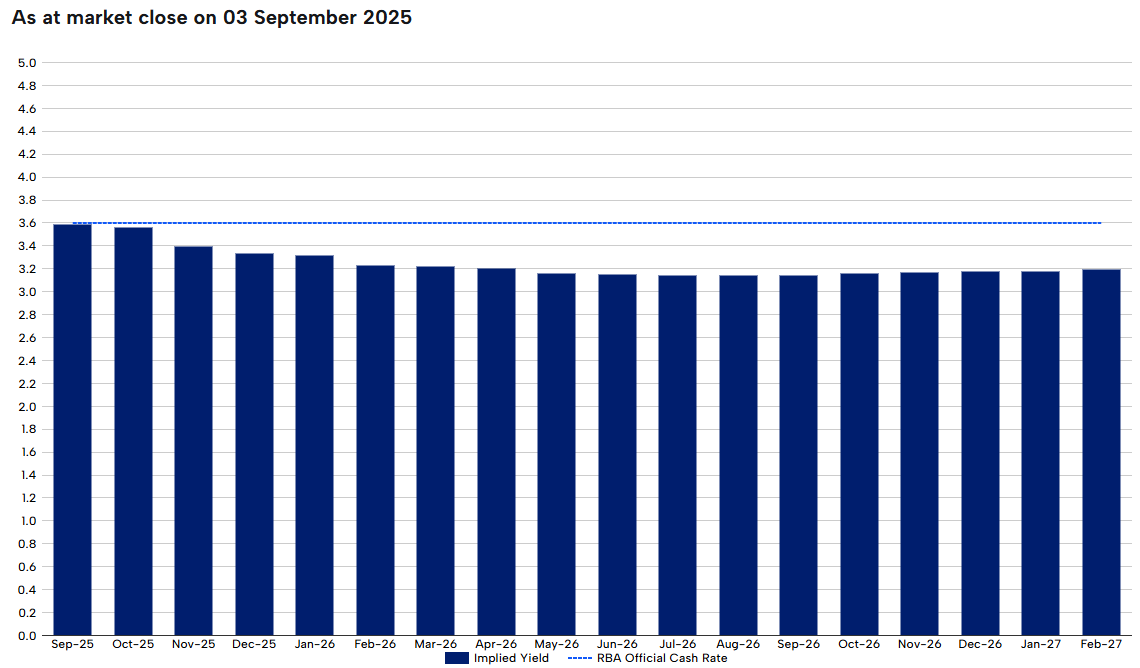
Their pessimism is warranted given the stronger-than-expected recent run of data from the Australian Bureau of Statistics (ABS).
The trimmed mean CPI inflation indicator for July rose materially, increasing by 0.6% to 2.7%.
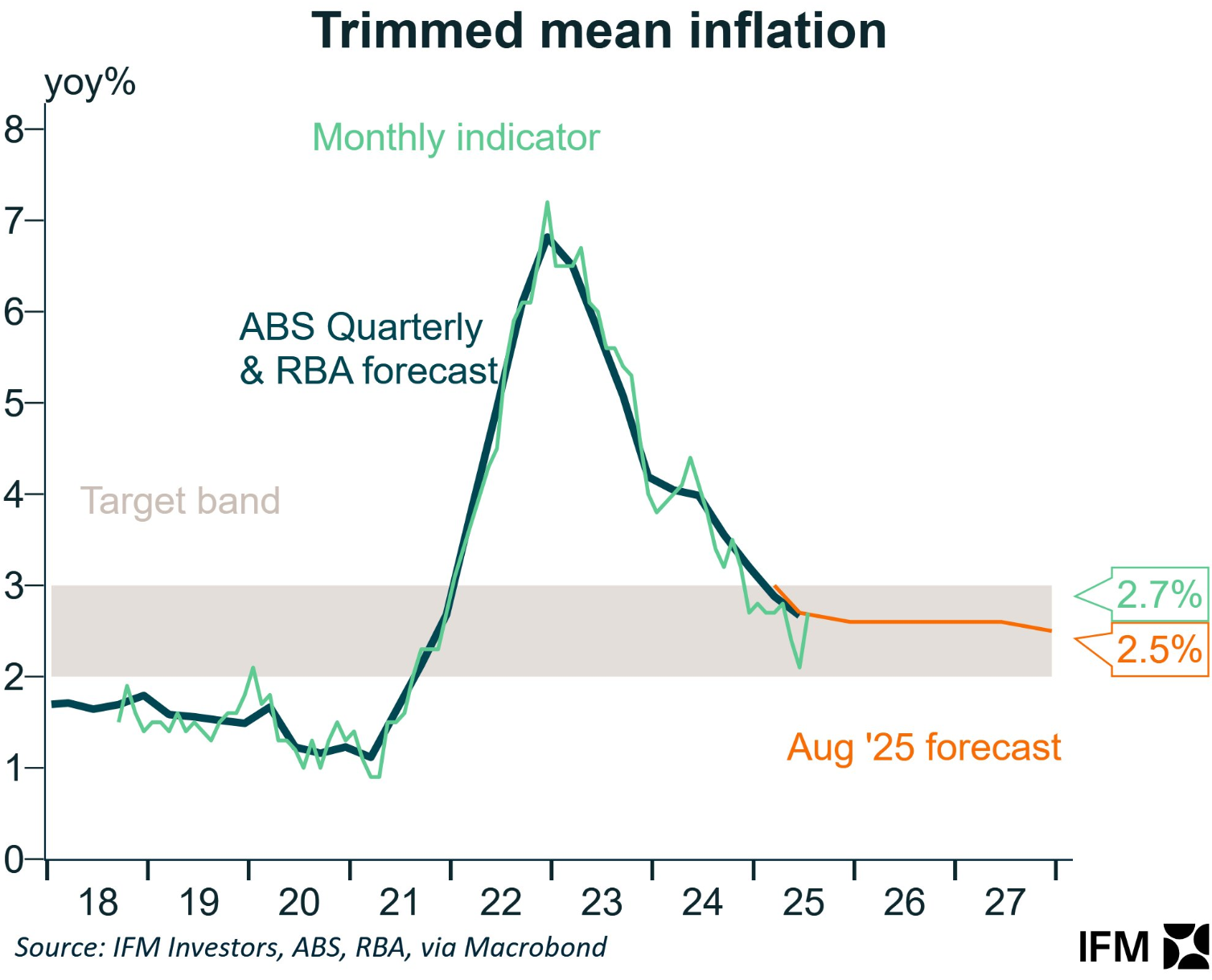
Although the monthly CPI indicator is not nearly as comprehensive as the official quarterly measure, it would have put the RBA on notice.
Wednesday’s Q2 national accounts release from the ABS then hammered another nail in the rate cut coffin.
As illustrated below by Alex Joiner from IFM Investors, household consumption grew much more strongly than anticipated by the RBA in its latest Statement of Monetary Policy:
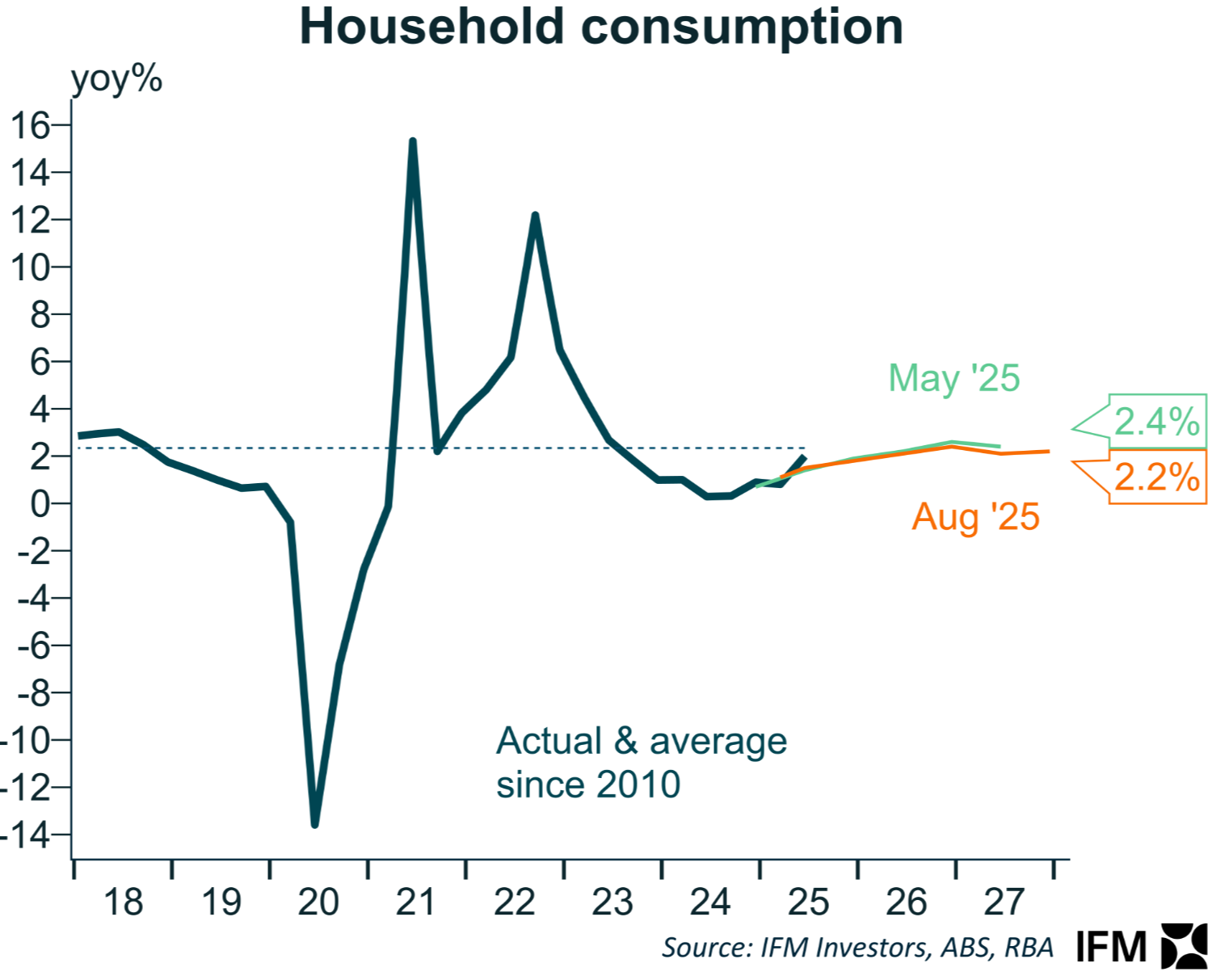
Household spending per capita grew by 0.5% in Q2, the strongest rise in three years. Annual per capita spending growth was also in positive territory (+0.3%) for the first time in two years.
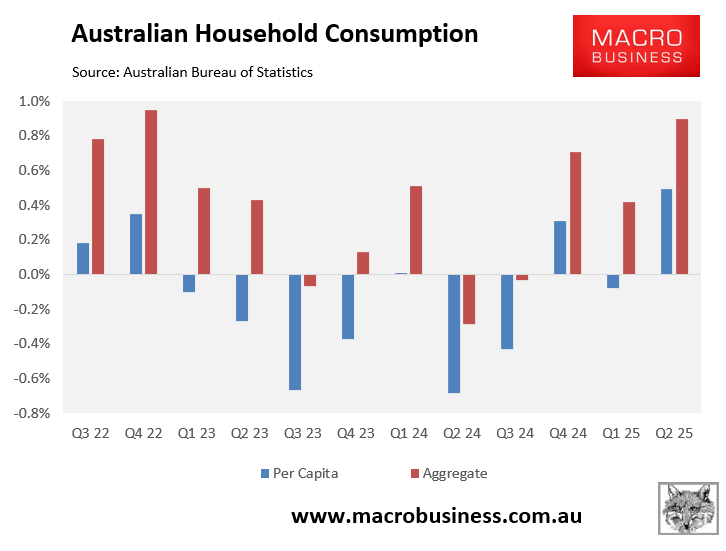
Speaking in Perth on Wednesday evening, RBA governor Michele Bullock said that the “stronger” than expected rise in consumer spending suggested there could be fewer interest rate cuts if the trajectory continues.
“We are seeing it [spending] come back, and that’s welcome”, Bullock said. “We’re seeing the private sector start to demonstrate a little bit more growth now, which I think is positive”.
“What it means for future interest rates, I don’t know. All I would say is that, if anything, it’s probably a little stronger than we thought it would be”.
“That’s good, but it does mean that it’s possible that if it keeps going, then there may not be many interest rate declines yet to come. But it all depends”, she said.
The strength continued on Thursday, with the ABS household spending indicator for July posting a solid 0.5% nominal gain to be 5.1% higher year-on-year:
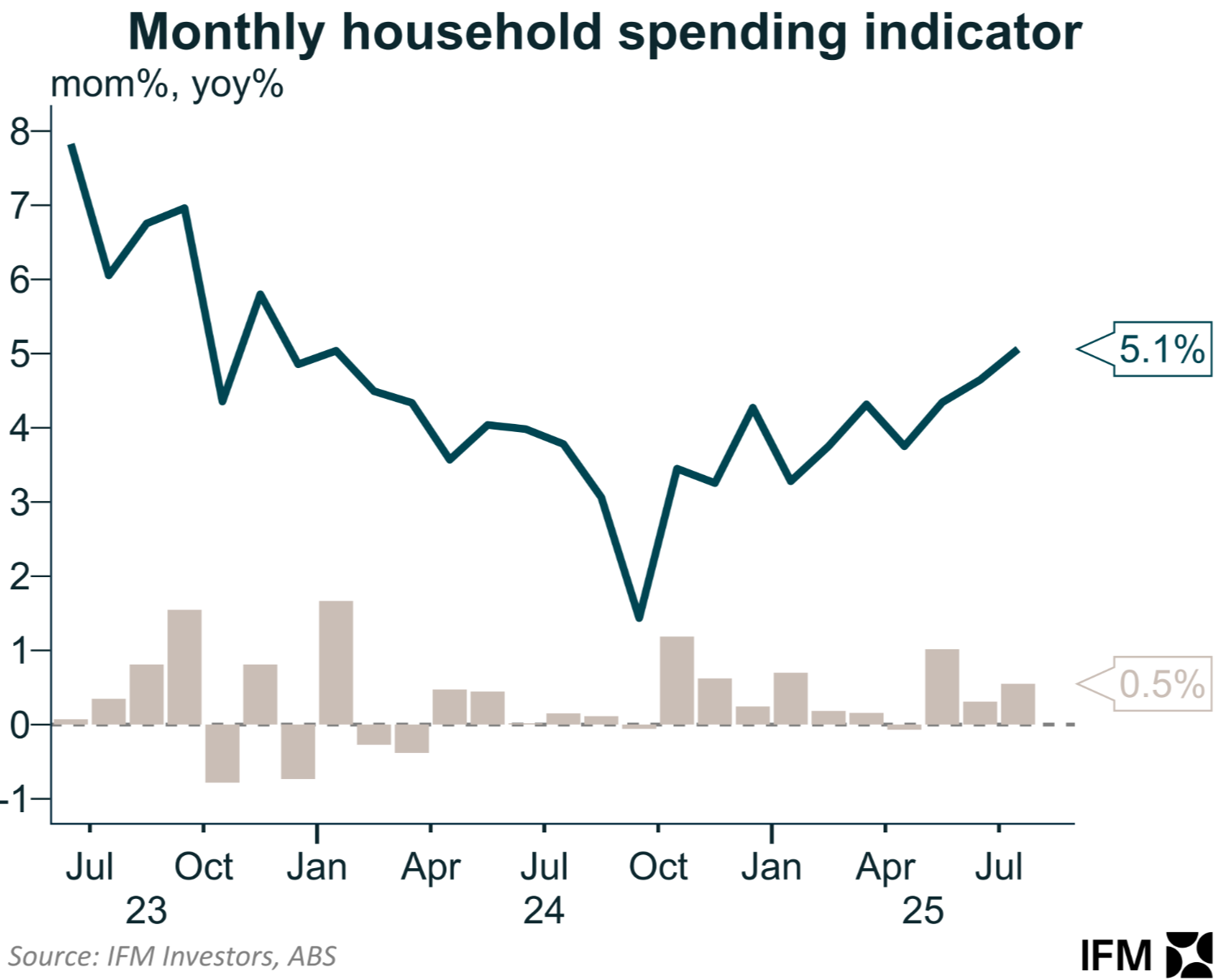
The spending growth was driven by strength in services:
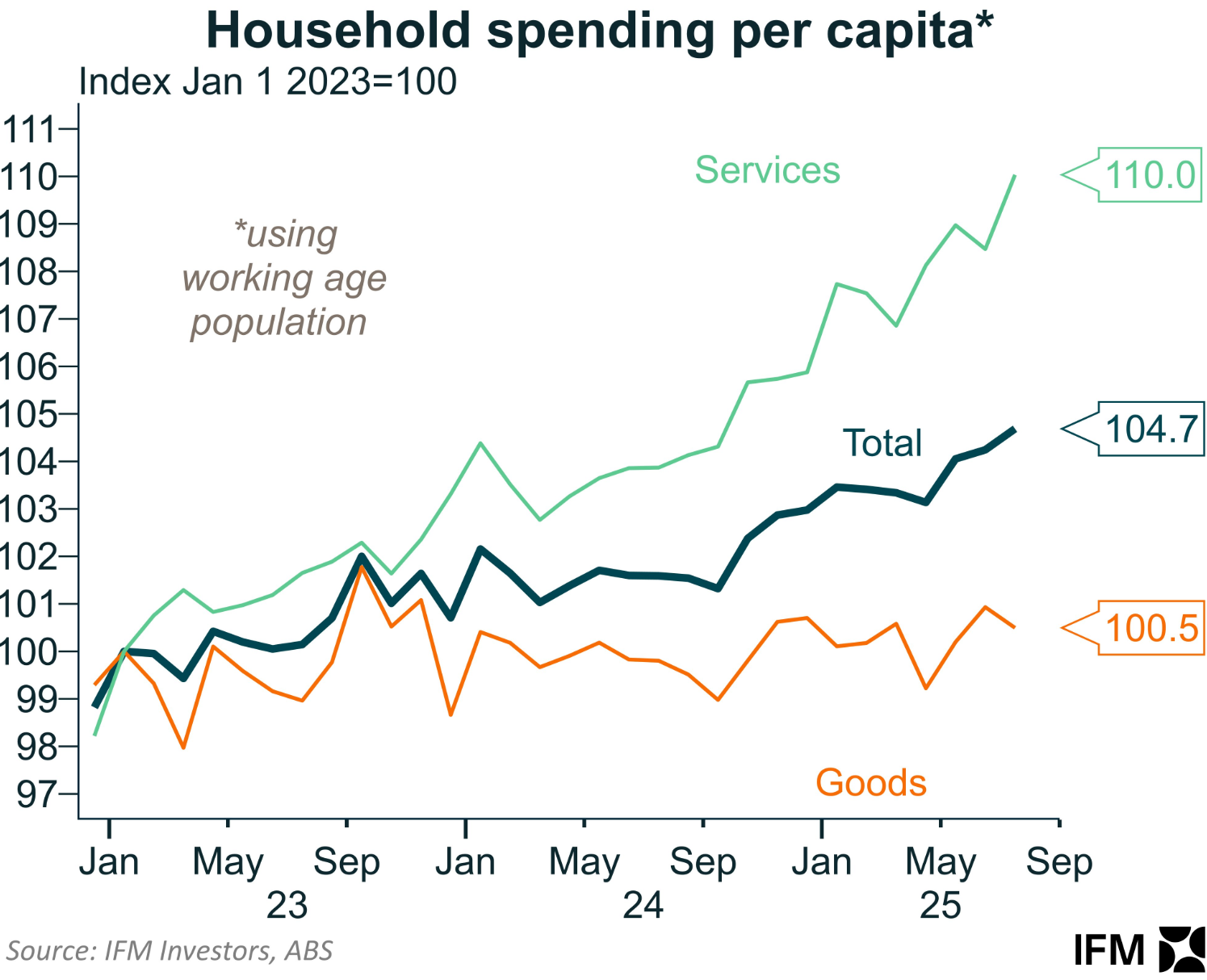
The following chart from Justin Fabo from Antipodean Macro plots the monthly household spending indicator against the quarterly national accounts measure of household consumption:
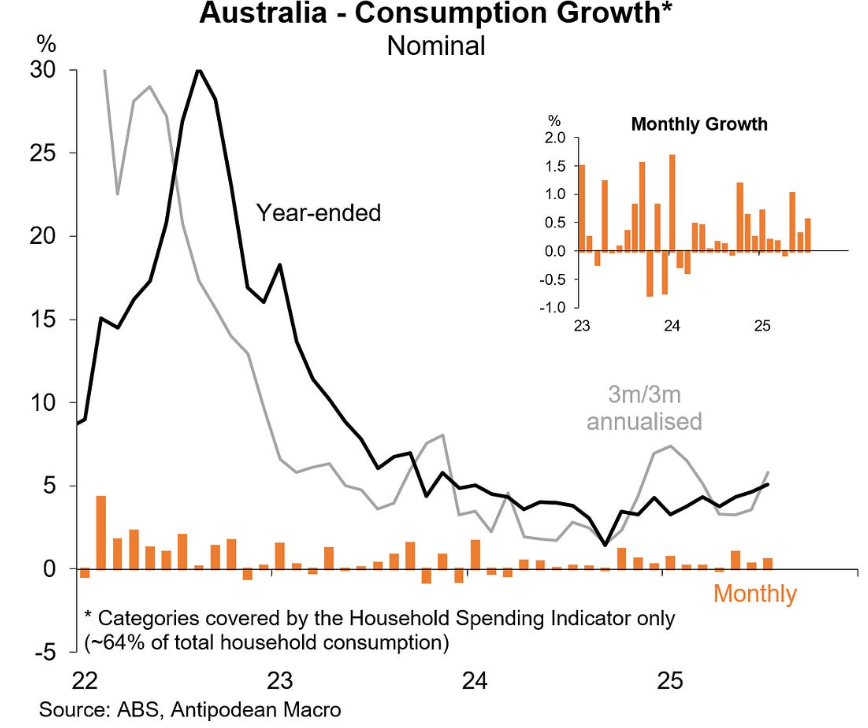
In summary, the strength in consumer spending has all but killed hopes of another rate cut in September.
Those hoping for another rate cut will likely have to wait until November, which will depend on the flow of incoming data.

